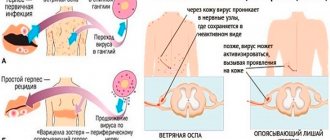Unidox Solutab®
Usually the duration of treatment is 5-10 days. The tablets are dissolved in a small amount of water (about 20 ml) to obtain a suspension; they can also be swallowed whole, divided into pieces or chewed with water. Preferably taken with food.
Take the tablets while sitting or standing, which reduces the likelihood of developing esophagitis and esophageal ulcers. The drug should not be taken immediately before bedtime.
Adults and children over 8 years of age weighing more than 50 kg are prescribed 200 mg in 1-2 doses on the first day of treatment, then 100 mg daily. In cases of severe infections, Unidox is prescribed at a dose of 200 mg daily throughout treatment.
For children 8-12 years old weighing less than 50 kg, the average daily dose is 4 mg/kg on the first day, then 2 mg/kg per day (in 1-2 doses). In cases of severe infection, Unidox is prescribed at a dose of 4 mg/kg daily throughout treatment.
Features of dosing for certain diseases
For infection caused by S.pyogenes, Unidox is taken for at least 10 days. For uncomplicated gonorrhea (excluding anorectal infections in men):
Adults are prescribed 100 mg twice a day until complete cure (on average within 7 days), or for one day they are prescribed 600 mg - 300 mg in 2 doses (the second dose 1 hour after the first).
For primary syphilis, 100 mg is prescribed twice a day for 14 days, for secondary syphilis - 100 mg twice a day for 28 days. For uncomplicated urogenital infections caused by Chlamydia trachomatis, cervicitis, non-gonococcal urethritis caused by Ureaplasma urealiticum, 100 mg is prescribed 2 times a day for 7 days.
For acne, 100 mg/day is prescribed, the course of treatment is 6-12 weeks.
Malaria (prevention): 100 mg 1 time per day 1-2 days before the trip, then daily during the trip and for 4 weeks after return; for children over 8 years old, 2 mg/kg 1 time per day.
The duration of prophylaxis should not exceed 4 months. Traveler's diarrhea (prevention) - 200 mg on the first day of the trip (in 1 dose or 100 mg 2 times a day), then 100 mg 1 time per day throughout your stay in the region (no more than 3 weeks).
Treatment of leptospirosis - 100 mg orally 2 times a day for 7 days; prevention of leptospirosis - 200 mg once a week during your stay in a disadvantaged area and 200 mg at the end of the trip.
To prevent infections during medical abortion, 100 mg is prescribed 1 hour before and 200 mg after the intervention.
Maximum daily doses for adults are up to 300 mg/day or 600 mg/day for 5 days for severe gonococcal infection. For children over 8 years old with a body weight of more than 50 kg - up to 200 mg, for children 8 - 12 years old with a body weight less than 50 kg - 4 mg/kg daily during the entire treatment period.
In the presence of renal (creatinine clearance less than 60 ml/min) and/or liver failure, a reduction in the daily dose of doxycycline is required, since this leads to a gradual accumulation of it in the body (risk of hepatotoxicity).
Bacterial vaginosis
The normal microflora of the vagina of women of reproductive age is one of the indicators of health, as it plays a large role in maintaining the microecological status. The interaction between representatives of normal microflora and vaginal epithelial cells takes place at the cellular and molecular levels and is constantly monitored by a number of systems of the macroorganism. The result of this interaction is the creation and maintenance of high colonization resistance of the vaginal epithelium to the introduction of pathogenic and opportunistic microorganisms [1–6].
Bacterial vaginosis is separated from the category of nonspecific vaginitis into a separate nosological form. It includes pathological conditions in the vagina, accompanied by disturbances in the qualitative and quantitative composition of normal microflora and not associated with bacterial sexually transmitted infections (STIs), fungi or protozoa.
According to modern concepts, bacterial vaginosis is an infectious non-inflammatory syndrome of polymicrobial etiology, which is associated with dysbiosis of the vaginal biotope. Disruption of the microecology of the vagina in bacterial vaginosis is characterized by a sharp decrease in the number or absence of lactobacilli producing hydrogen peroxide and an increase in the number of Gardnerella vaginalis, gram-negative anaerobic bacteria (Bacteroides spp., Mobiluncus spp., Fusobacterium spp., Peptostreptoicoccus spp., M. hominis, U. urealyticum ).
Gardnerella, like lactobacilli, have a pronounced ability to adhere to the surface of vaginal epithelial cells. Gardnerella vaginalis can produce toxic bioproducts, which include mucolytic enzymes and hemolysin, which is a leukotoxic factor. Hemolysin, acting on erythrocytes, causes the formation of numerous pores in the erythrocyte membrane, and also affects leukocytes, causing their structural and functional disorders. This explains the absence of significant leukocyte infiltration, i.e., leukocyte activity in the presence of Gardnerella vaginalis.
Representatives of the Mycoplasmataceae family - Mycoplasma hominis and Ureaplasma urealyticum - play a certain role in the pathogenesis of bacterial vaginosis. 70% of the isolated Ureaplasma urealyticum strains belong to the Parvo biovar, 23.3% to the T960 biovar. Most of the patients from whom Ureaplasma urealyticum, belonging to the biovar Parvo, was isolated, had in the past early onset of sexual activity, frequent changes of sexual partners, the presence of several sexual partners at the same time, a large number of pregnancies and abortions, as well as concomitant gynecological diseases and STIs.
When examining sexual partners of patients with bacterial vaginosis, morphotypes of microorganisms associated with bacterial vaginosis were detected in 25% of men, while clinical manifestations (balanoposthitis) were observed only in 3.1% [2].
As a result of a submicroscopic study of vaginal exudate from patients with bacterial vaginosis, the structural and functional characteristics of microbial cells involved in interaction with each other were determined, while the cells of the host body are represented predominantly by squamous epithelium. The gram variability of Gardnerella vaginalis has been established, regardless of the nature of microbial associations. Analysis of electron diffraction patterns demonstrated that the structural organization of Gardnerella vaginalis adhered to the surface of epithelial cells did not depend on the combination of bacterial vaginosis with other infectious agents.
When bacterial vaginosis was combined with Chlamydia trachomatis, Mycoplasma hominis, Ureaplasma urealyticum, a significant number of microorganisms in the intercellular space and bacteria morphologically identical to mycoplasmas were observed [2].
Patients complain of copious white or gray discharge from the genital tract, often with an unpleasant odor, especially after sexual intercourse or during menstruation. During a long-term process, the discharge acquires a yellowish-green color, becomes thicker, often resembles a cheesy mass, and has the property of foaming; slightly viscous and sticky, they are evenly distributed over the walls of the vagina. The amount of leucorrhoea varies from moderate to very heavy, averaging 20 ml per day. Complaints of itching and dysuric disorders are rare: they may be completely absent or appear periodically. These symptoms are found in 16–23% of patients with disorders of the vaginal microflora. A characteristic sign of bacterial vaginosis is the absence of inflammation of the vaginal walls. Often, women with bacterial vaginosis complain of heavy menstrual bleeding and pain in the lower abdomen. At the same time, some patients do not have any subjective sensations.
Diagnosis of bacterial vaginosis is based on medical history, assessment of subjective and objective symptoms of the disease, results of laboratory tests - microscopic examination of the material, amine test and pH of vaginal exudate [3].
When collecting anamnesis, they find out:
- past treatment with antibiotics, cytostatics, corticosteroids, antiviral and antifungal drugs;
- the presence of gynecological, endocrine diseases, diseases of the gastrointestinal tract, etc.;
- compliance with the rules of personal and sexual hygiene;
- data on sexual partners, the practice of sexual contacts and the condition of the genitourinary system of sexual partners;
- use and methods of contraception.
The diagnosis of bacterial vaginosis is established based on the presence of three criteria from the following:
- homogeneous discharge of a whitish-gray color, evenly adhered to the mucous membrane of the vulva and vagina, having an unpleasant odor;
- pH of vaginal exudate > 4.5;
- a positive result of the amine test (the appearance of a fishy odor when mixing vaginal discharge with a 10% KOH solution in equal proportions on a glass slide);
- changes in the microcenosis of the vagina, revealed by microscopic examination of vaginal exudate.
The patient should be examined no earlier than 72 hours after the last sexual intercourse (without using a condom); it is also not performed during menstruation. For 3 weeks before the examination, the woman should not receive treatment with systemic and local antibacterial drugs [3].
Microscopic examination of a native and Gram-stained vaginal smear reveals the following signs:
- massive, less often - a large number of microbial cells with a predominance of morphotypes of anaerobes and Gardnerella vaginalis;
- complete absence or single presence of lactobacilli morphotypes;
- the vaginal epithelium is represented by cells of the superficial layers, intermediate cells are rarely found, often the so-called “key” cells (epithelial cells of the vagina, on the surface of which gram-variable coccorbacillary microflora is adhered);
- absence of leukocyte reaction (1/3 of women with bacterial vaginosis have no leukocyte reaction).
The assessment of the total microbial contamination of vaginal discharge is carried out using a 4-point system - according to the number of microbial cells detected in one field of view during immersion microscopy:
1 point (+) - up to 10 microbial cells in the field of view, a small number of them (scanty growth);
2 points (++) - from 11 to 100 microbial cells in the field of view, their number is moderate;
3 points (+++) - from 100 to 1000 microbial cells in the field of view, a large number of them;
4 points (++++) - more than 1000 microbial cells in the field of view, a massive number of them.
Since Gardnerella vaginalis can be detected in healthy women, culture and PCR diagnostics are not performed to identify Gardnerella vaginalis. A cultural study is carried out if there are indications to determine the species and quantitative composition of the vaginal microcenosis and exclude pathogens of STIs.
A cultural examination may reveal changes characteristic of bacterial vaginosis: total microbial contamination exceeds 109 CFU/ml; when using only aerobic cultivation conditions, there is no growth of microorganisms or growth of accompanying opportunistic microorganisms is observed (usually in a small titer); polymicrobial nature of the microflora with an absolute predominance of obligate anaerobic species and Gardnerella vaginalis; lack of growth of lactobacilli or a sharp decrease in their titer (< 104 CFU/ml).
Based on the studies conducted, it is currently recommended that the patient management plan include:
- analysis of subjective and objective manifestations of the disease, obstetric, gynecological and sexual history data with an emphasis on previous or concomitant diseases of the urogenital system;
- comprehensive assessment of vaginal microbiocenosis, including identification of STI pathogens;
- identification of Mycoplasma hominis, Ureaplasma urealyticum by cultural method with quantitative assessment of pathogens;
- determination of the biological identity of Ureaplasma urealyticum to decide on the choice of tactics for further management of the patient;
- it is advisable to involve specialists in related disciplines (gynecologists, urologists) in the presence of concomitant diseases of the urogenital system;
- clinical and microbiological examination of sexual partners (preventive treatment of sexual partners of patients with bacterial vaginosis is currently considered inappropriate).
The goal of treatment is to reduce the severity of clinical symptoms, normalize laboratory parameters, and prevent the development of possible complications during pregnancy, as well as in the postpartum period and when performing invasive gynecological procedures.
Normal laboratory results are as follows.
- On microscopic examination:
- moderate or large number of microbial cells with a predominance of lactobacilli morphotypes;
- the vaginal epithelium is represented by cells of the superficial layers, cells of the intermediate layer are less common, and there are no “key” cells;
- leukocyte reaction is absent or weakly expressed - single leukocytes in the field of view.
- When examining the pH of vaginal exudate: 3.8–4.5.
- Amine test: negative (no fishy odor when mixing vaginal discharge with 10% KOH solution in equal proportions on a glass slide)
- During microbiological examination:
- total microbial contamination 106–108 CFU/ml;
- absolute predominance of lactobacilli;
- opportunistic microorganisms in low titer (104 CFU/ml) or absent.
Treatment
The main direction of therapy is the use of local or systemic antibacterial drugs with an antianaerobic effect.
The use of clindamycin is indicated. The drug is a 7-deoxy derivative of lincomycin, inhibits protein synthesis in microorganisms, has a bacteriostatic or bactericidal effect depending on the concentration in the macroorganism and the sensitivity of the microorganism. The drug is effective against gram-positive microorganisms (staphylococci, streptococci, pneumococci, diphtheria bacillus), gardnerella, mycoplasma. Resistance of microorganisms to clindamycin develops slowly. When taken orally, clindamycin is absorbed better than lincomycin. After intramuscular administration, the maximum concentration in the blood is observed after 2–2.5 hours. The drug penetrates well into body fluids and tissues and is excreted in urine and bile. If renal and liver function are impaired, the elimination of clindamycin slows down. For bacterial vaginosis, one of the dosage forms of clindamycin can be prescribed: 2% cream 5 g in an applicator (single dose) intravaginally 1 time per day (at night) for 6 days; ovulation 100 mg intravaginally at night for 3 days; capsules 300 mg orally 2 times a day for 7 days.
Clindamycin is approved for use in pregnant women in the form of 2% cream 5 g (single dose) intravaginally 2 times a day for 5 days.
Metronidazole can also be prescribed for bacterial vaginosis. It has a wide spectrum of action against protozoa, suppresses the development of Trichomonas vaginalis, Entamoeba histolytica and Giardia. The drug is highly effective against anaerobic bacteria. Metronidazole is well absorbed when taken orally, penetrates organs and tissues, passes through the placenta and blood-brain barrier, and accumulates in the liver. The half-life of the drug is 8–10 hours and is completely eliminated from the body 1–2 days after administration. Metronidazole is mainly excreted in the urine unchanged and in the form of metabolites, partially in the feces. When using metronidazole, loss of appetite, dryness and unpleasant taste in the mouth, nausea, vomiting, diarrhea, headache, urticaria, and itching may occur. These phenomena disappear after the end of treatment or discontinuation of the drug. Possible leukopenia. The drug is contraindicated during pregnancy and breastfeeding, hematopoietic disorders, and acute diseases of the central nervous system. To avoid the development of severe adverse reactions, patients should be warned not to consume alcohol and products containing it both during metronidazole therapy and for 24 hours after its end. For bacterial vaginosis, one of the following treatment regimens using metronidazole can be used:
- gel 0.75% 5 g (single dose) intravaginally (at night) for 5 days;
- tablets 500 mg orally 2 times a day for 7 days;
- tablets 2 g orally once.
Other metronidazole derivatives are also used:
- tinidazole (Tinidazole-Acri, Verotinidazole), tablets 2 g orally once;
- ornidazole (Ornidazole-Vero), tablets 500 mg orally 2 times a day for 5 days.
Previously, a comparative study of the effectiveness of topical probiotics was conducted. Since there were no significant differences in treatment results in patients who received and did not receive these drugs, they are currently not recommended for the treatment of bacterial vaginosis [3].
When bacterial vaginosis is combined with an STI, antibacterial drugs are simultaneously used in accordance with the nosological form of the disease [2]. For uncomplicated gonorrheal infection, ceftriaxone is prescribed intramuscularly in a single dose of 250 mg (the drug is a third-generation cephalosporin antibiotic; after intramuscular administration, the peak concentration in the blood is observed after 1.5 hours; it is excreted slowly from the body). If chlamydia and/or mycoplasmas are detected, the use of antibiotics - macrolides, tetracyclines - is indicated.
The high therapeutic effect and good tolerability have contributed to the significant spread of the use of macrolides. Their antimicrobial effect is due to disruption of protein synthesis in the ribosomes of the microbial cell. As a rule, macrolides have a bacteriostatic effect, but in high concentrations they can also cause a bactericidal effect. In addition to their antibacterial effect, macrolides have moderate immunomodulatory and anti-inflammatory activity. A representative of the third generation of macrolides is josamycin (Vilprafen). This antibiotic is quickly absorbed from the gastrointestinal tract (GIT), penetrates well through biological membranes and accumulates in tissues. The maximum concentration is reached 1–2 hours after administration. 45 minutes after taking a dose of 1 g, the average concentration of josamycin in plasma is 2.41 mg/l; binding to plasma proteins does not exceed 15%. Taking the drug at intervals of 12 hours ensures that the effective concentration of josamycin in tissues is maintained throughout the day. An equilibrium state is achieved after 2–4 days of regular use. The concentration of josamycin in human polymorphonuclear leukocytes, monocytes and alveolar macrophages is approximately 20 times higher than in other cells of the body. The drug is biotransformed in the liver to less active metabolites. Josamycin is excreted mainly in bile, but excretion in urine is less than 20%. The drug is prescribed 500 mg 2 times a day for 10 days.
From the group of tetracyclines, doxycycline is the most effective for STIs; In recent years, Unidox Solutab has been widely used. The drug differs from Doxycycline hydrochloride in its neutral reaction, has less irritating effect on the mucous membrane of the digestive tract and has improved antimicrobial and pharmacokinetic properties. Unidox Solutab blocks ribosomal polymerase and inhibits protein synthesis in microorganisms.
Unidox Solutab tablets have controlled solubility. They can not only be taken orally whole or in parts, but also quickly prepared from them into a syrup, suspension (dissolving the tablet in 20 ml of water) or solution (dissolving the tablet in 100 ml of water), which have a pleasant taste. The tablets dissolve in water within 5–10 s, in biological fluids within 1 min, turning into a uniform suspension.
Unidox Solutab is completely absorbed. The bioavailability of the drug is 95%. 2 hours after dosing (200 mg on the first day and 100 mg on subsequent days), serum levels range from 1.5 to 3 mg/ml. The drug is 80–90% bound to plasma proteins, penetrates well into tissues, and accumulates in the reticuloendothelial system. The half-life is 16–18 hours, after repeated doses it is 22–23 hours.
Previously, advantages were noted in the absence of side effects such as esophagitis, which occur when using conventional forms of Doxycycline hydrochloride, the ability to accumulate in high concentrations in the reproductive organs and actively influence the infectious agent.
Unidox Solutab is prescribed at a dose of 200 mg for 10 days.
Laboratory monitoring of the effectiveness of therapy should be carried out immediately after the end of etiotropic treatment: by microscopy of vaginal smears stained with Gram, it is necessary to ascertain the degree of eradication of microorganisms associated with bacterial vaginosis; when culturing vaginal discharge, detect cases of colonization with facultative anaerobic opportunistic microorganisms.
When bacterial vaginosis is combined with urogenital chlamydia and/or mycoplasmosis, laboratory monitoring must be repeated 3 weeks after the end of therapy.
For questions regarding literature, please contact the editor.
I. V. Khamaganova, Doctor of Medical Sciences, Professor of Russian State Medical University, Moscow
Special instructions for the use of Unidox Solutab
Unidox Solutab is prescribed to patients with severe impairment of liver and kidney function only if treatment with other drugs is impossible, and the dose of the drug is reduced. Strains resistant to other tetracycline drugs may be resistant to doxycycline. Long-term use of the drug can cause hypovitaminosis due to the development of dysbacteriosis. The drug is contraindicated for use in the second and third trimester of pregnancy. Doxycycline slows down osteogenesis, increases bone fragility in the fetus, disrupts the normal process of tooth development (teeth color irreversibly changes, enamel hypoplasia occurs). Doxycycline is detected in breast milk in amounts that are 30–40% of its serum level. To prevent dyspepsia, it is recommended to take the drug with meals.
Side effects of the drug Unidox Solutab
Anorexia, nausea, vomiting, dysphagia, glossitis, possible diarrhea and enterocolitis caused by the growth of resistant strains of staphylococci, candidiasis due to the proliferation of Candida albicans (clinically manifested by diarrhea, glossitis, stomatitis, proctitis, vaginitis), maculopapular and erythematous rash, rarely exfoliative dermatitis, photosensitivity; urticaria, angioedema, anaphylactic reactions, pericarditis, exacerbation of systemic lupus erythematosus, hemolytic anemia, thrombocytopenia, neutropenia, eosinophilia.
Unidox Solutab tab 100mg N10 (Astellas)
Unidox is bacteriostatic, antibacterial. Suppresses protein synthesis in the microbial cell, disrupting the connection of transport RNAs of the ribosomal membrane. Pharmacodynamics Broad-spectrum antibiotic from the tetracycline group. It acts bacteriostatically, suppresses protein synthesis in the microbial cell by interacting with the 30S ribosomal subunit. Active against many gram-positive and gram-negative microorganisms: Streptococcus spp., Treponema spp., Staphylococcus spp., Klebsiella spp., Enterobacter spp. (including E. aerugenes), Neisseria gonorrhoeae, Neisseria meningitidis, Haemophilus influenzae, Chlamydia spp., Mycoplasma spp., Ureaplasma urealyticum, Listeria monocytogenes, Rickettsia spp., Typhus exanthematicus, Escherichia coli, Shigella spp., Campylobacter fetus, Vibrio cholerae, Yersinia spp. (including Yersinia pestis), Brucella spp., Francisella tularensis, Bacillus anthracis, Bartonella bacilliformis, Pasteurella multocida, Borrelia recurrentis, Clostridium spp. (except Clostridium difficile), Actinomyces spp., Fusobacterium fusiforme, Calymmatobacterium granulomatis, Propionibacterium acnes, some protozoa (Entamoeba spp., Plasmodium falciparum). As a rule, does not affect Acinetobacter spp., Proteus spp., Pseudomonas spp., Serratia spp. ., Providencia spp., Enterococcus spp. The possibility of acquired resistance to doxycycline in a number of pathogens should be taken into account, which is often cross within the group (i.e. strains resistant to doxycycline will simultaneously be resistant to the entire group of tetracyclines). Pharmacokinetics Absorption Absorption - fast and high (about 100%). Food intake has little effect on the absorption of the drug. Cmax of doxycycline in the blood plasma (2.6–3 μg/ml) is achieved 2 hours after taking 200 mg; after 24 hours, the concentration of the active substance in the blood plasma decreases to 1.5 μg/ml. After taking 200 mg on the first day of treatment and 100 mg/day on subsequent days, the concentration of doxycycline in the blood plasma is 1.5–3 mcg/ml. Distribution Doxycycline reversibly binds to plasma proteins (80–90%), penetrates well into organs and tissue, poorly - into the cerebrospinal fluid (10-20% of the level in the blood plasma), however, the concentration of doxycycline in the cerebrospinal fluid increases with inflammation of the spinal lining. The volume of distribution is 1.58 l / kg. 30–45 minutes after oral administration, doxycycline is found in therapeutic concentrations in the liver, kidneys, lungs, spleen, bones, teeth, prostate gland, eye tissue, pleural and ascitic fluids, bile, synovial exudate, exudate of the maxillary and frontal sinuses, in fluid of the gingival grooves. With normal liver function, the level of the drug in bile is 5–10 times higher than in plasma. In saliva, 5–27% of the concentration of doxycycline in blood plasma is determined. Doxycycline penetrates the placental barrier and is secreted in small quantities into the breast milk. Accumulates in dentin and bone tissue. Metabolism A small part of doxycycline is metabolized. Elimination T1/2 after a single oral dose is 16–18 hours, after repeated doses - 22–23 hours. Approximately 40% of the drug taken is excreted by the kidneys and 20–40% is excreted through the intestines in the form of inactive forms (chelates). Pharmacokinetics in special clinical cases The half-life of the drug in patients with impaired renal function does not change, because its excretion through the intestines increases. Hemodialysis and peritoneal dialysis do not affect the concentration of doxycycline in the blood plasma.










